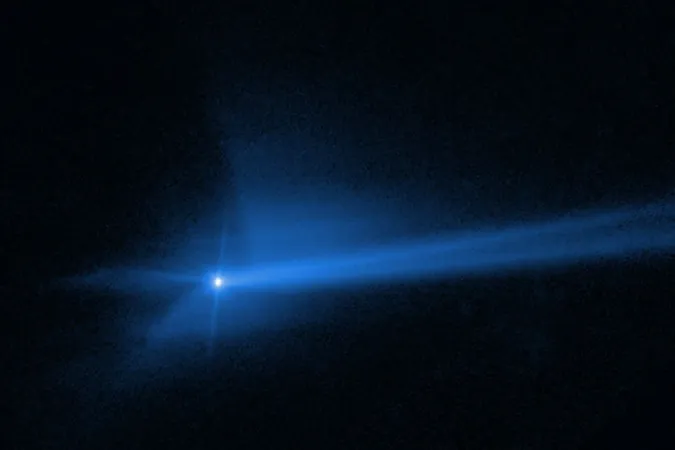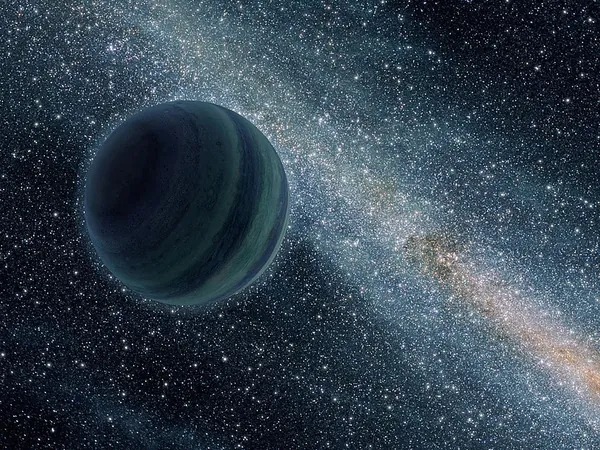
First-Ever Artificial Meteor Shower Incoming: Debris from DART Mission Expected to Light Up the Skies!
2024-11-04
Author: Rajesh
Introduction
Get ready, stargazers! In an unprecedented turn of events, debris from NASA's groundbreaking Double Asteroid Redirect Test (DART) mission is on course to create the world’s first artificial meteor shower. This spectacular celestial event arises from an experiment aimed at testing humanity’s resilience against potential asteroid threats.
The DART Mission
On September 26, 2022, DART collided with the 160-meter-wide asteroid Dimorphos, successfully altering its orbit around the larger asteroid Didymos by over 30 minutes. This historic impact showcased our capability to redirect asteroids that could otherwise spell disaster for Earth, establishing a new frontier in planetary defense.
A Unique Meteor Shower
Meteor showers typically occur when Earth traverses through streams of debris from comets or asteroids. However, this case is unique, as the debris emanates from human intervention—making it a pioneering instance of an artificial meteor shower. Astronomers are keenly observing this phenomenon, having pinpointed the exact time and location of the impact, allowing for extensive research into the behavior of the resulting debris cloud within our Solar System.
Research and Predictions
A dedicated team of researchers, led by Eloy Peña-Asensio from the Politecnico di Milano, conducted simulations of over three million particles of various sizes and speeds to predict their trajectories. “We have identified ejecta orbits that could lead to meteor-producing particles reaching both Mars and Earth,” Peña-Asensio announced.
Future Observations
The projections suggest that smaller, faster-moving particles may arrive at Earth within the next seven years. While these particles pose no danger, they could produce a mesmerizing display in the night sky. Interestingly, the larger fragments, due to their slower speeds, are more likely to reach Mars.
Excitement in the Scientific Community
Josep M Trigo-Rodríguez from the Spanish Institute of Space Sciences expressed excitement about these findings: “We were amazed to find that some centimetre-sized particles have the potential to make it to the Earth-Moon system and create a new meteor shower!”
Conclusion
As anticipation builds, the research team will closely monitor the skies for signs of this remarkable meteor shower, expected to be most visible in the Southern Hemisphere during the month of May—a spectacular show highlighting humanity’s innovative capabilities and our ongoing quest to safeguard our planet. Mark your calendars, and prepare to witness the first-ever artificial meteor shower—a dazzling blend of science and wonder straight from the cosmos!



 Brasil (PT)
Brasil (PT)
 Canada (EN)
Canada (EN)
 Chile (ES)
Chile (ES)
 Česko (CS)
Česko (CS)
 대한민국 (KO)
대한민국 (KO)
 España (ES)
España (ES)
 France (FR)
France (FR)
 Hong Kong (EN)
Hong Kong (EN)
 Italia (IT)
Italia (IT)
 日本 (JA)
日本 (JA)
 Magyarország (HU)
Magyarország (HU)
 Norge (NO)
Norge (NO)
 Polska (PL)
Polska (PL)
 Schweiz (DE)
Schweiz (DE)
 Singapore (EN)
Singapore (EN)
 Sverige (SV)
Sverige (SV)
 Suomi (FI)
Suomi (FI)
 Türkiye (TR)
Türkiye (TR)
 الإمارات العربية المتحدة (AR)
الإمارات العربية المتحدة (AR)